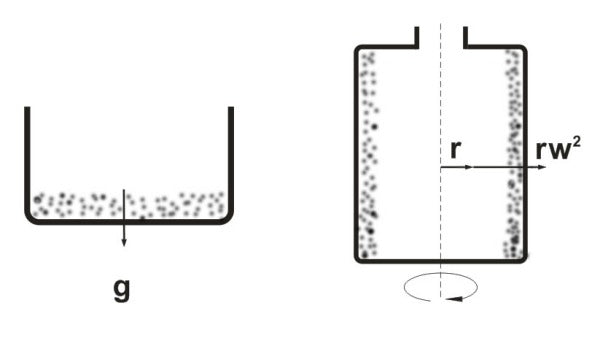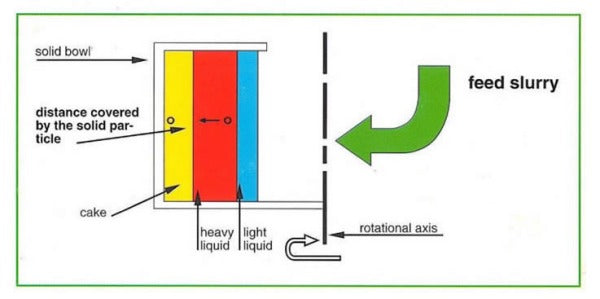Description
Centrifugal separation technology
Centrifugal Separation Technology is the most widely used method for separating fluids with different densities. It is also used in separating solids from liquids or solids from gasses.
The need to separate different liquid phases and solids from each other is part of practically every industrial process. Huading Separator has more than half a century of experience in meeting this requirement using either separator or decanter technology. And our products perform this crucial function exceptionally well.
The product range is based on centrifugal separation machines for separating liquids from each other or for removing solid particles from liquids. All these centrifugal separation machines are based on density difference.
Sedimentation
Terminal free settling velocity of a spherical particle under gravitational force can be determined by the Newton’s law:

Where
u, m/s settling velocity
d, m particle diameter
g, m/s2 acceleration of gravity
ρ1 Kg/m3 density of particle
ρ2 Kg/m3 density of liquid
CD drag coefficient
CD has been found to be a function of Reynolds Number. If the flow around the particle is laminar Re < 0.6 then CD =24/Re. In this case, we can reduce the equation of settling velocity to :

Where
u , m/s settling velocity
d, m particle diameter
g, m/s2 acceleration of gravity
ρ1, Kg/m3 ensity of particle
ρ2, Kg/m3 ensity of liquid
μ, Pas fluid dynamic viscosity
This expression is the Stoke’s law of the terminal settling velocity of a spherical particle under laminar flow conditions.
Centrifugation
If the settling is carried out in a centrifugal field instead of gravitational, then we have to deal with a centrifugal acceleration, which is not constant like “g”, but increases as the distance of the particle from the axis of the rotation of the vessel and as the angular velocity (See Fig .1.). Sedimenting centrifuges use centrifugal force to accelerate the sedimentation process. By rotating the process fluid, the sedimentation rate can be increased by a factor of several thousands compared to static sedimentation or settling. In applications, in which centrifuges are used, the static sedimentation velocity is between 10-9 and 10-4 m/s. To accelerate the process, centrifuges apply centrifugal forces of 500-30000g.

Fig.1. Principal analogy between sedimentation and centrifugation
The factor Z= rω2/g specifies how much greater the sedimentation rate of a particle is in a centrifugal field as compared with the gravitational field.
The next figure illustrates a centrifugal separator for removing solid particles from liquids.
Accelerating the separation process
In essence, a centrifuge is a settling tank whose base is wrapped around a centre line. Rotating this entire unit rapidly means that the effect of gravity is replaced by a controllable centrifugal force that can have an effect up to 10,000 times greater.
This force is then used to separate liquids from other liquids and solids efficiently and with great accuracy, and in a manner that is easy to control.

In the centrifugal field, under the action of centrifugal force, when the denser solids are subjected to centrifugal forces, they are forced outwards against the rotating bowl wall, while the less dense liquid phases form concentric inner layers
Centrifugal force
Centrifugal separating technology utilizes fundamental physical laws and centrifugal force.
Centrifugal force is produced through rotation around an axis. The force generated through the rotation acts in an outward direction. Depending on the speed of the rotating body, it increases or drops on the circular path.
Mechanical separation technology makes use of this property when light, heavy or substances of different density have to be separated from each other.
Centrifugal forces in a vessel
The centrifugal forces act on all particles. The particles with the specifically higher weight are spun outwards fastest and most effectively. They then deposit on the edge of the vessel.
Separation by means of centrifugal force is, however, faster when the vessel has an insert. Thanks to the insert, the specifically heavier particles deposit faster. The settling path is shortened by the insert. By this means, a higher throughput capacity is attained.
This means: larger volumes of liquid mixtures can be clarified or separated in the same period of time. The more inserts there are, the shorter the settling paths and the higher the throughput capacities.
Disc stack centrifuge
지불 및 보안
Your payment information is processed securely. We do not store credit card details nor have access to your credit card information.


